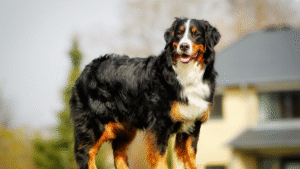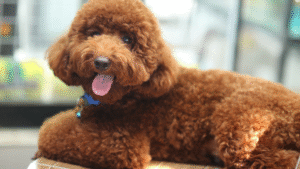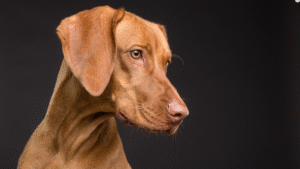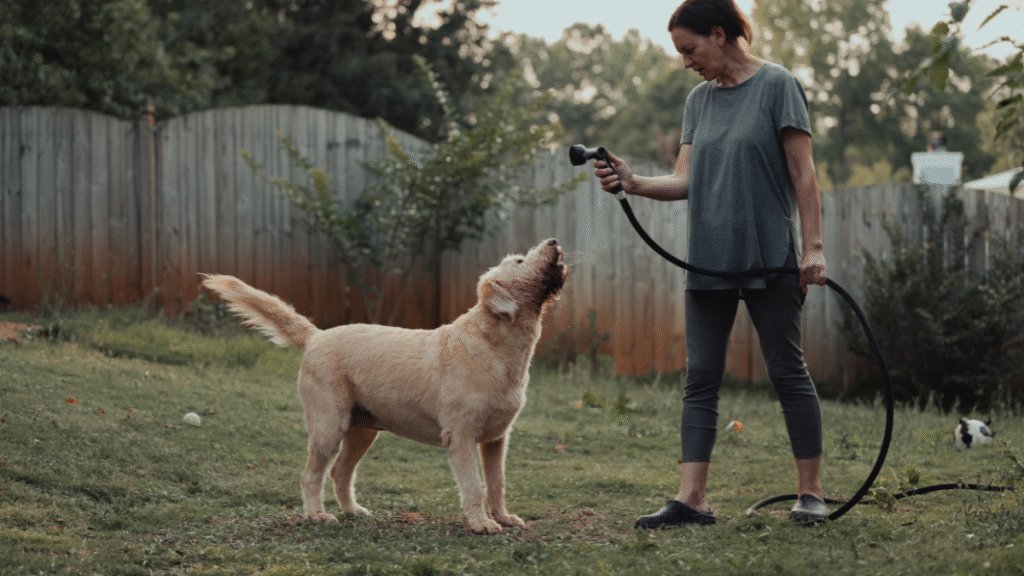One of the most impressive and useful obedience skills you can teach your dog is the “stay” command. Whether it’s waiting politely before going through the door, holding position while guests arrive, or staying calm when you step out of sight, a solid “stay” demonstrates safety, trust, and self-control in your pet.
In this guide, we’ll cover everything you need to know about how to train your dog to stay—even when you’re not visible.

Why Is Teaching Your Dog to Stay Important?
Before getting into the details of stay training, it’s important to understand why this command matters. “Stay” is more than just a cute or impressive trick—it’s a practical behavior that helps your dog:
-
Stay safe: A reliable stay command prevents dogs from running into traffic, off-leash areas, or toward dangerous situations.
-
Build self-control: Practicing “stay” helps your dog develop patience and impulse control, which positively affects all other aspects of behavior.
-
Improve focus: Training sharpens your dog’s ability to pay attention to you and resist distractions.
-
Strengthen your bond: Consistent training strengthens communication and trust between you and your dog.
Supplies and Preparation for Teaching “Stay”
Before you begin training, make sure you have the right supplies and environment:
-
A quiet, low-distraction area: Start somewhere calm, such as your living room, kitchen, or backyard.
-
High-value treats: The tastier, the better! Choose small, soft, and smelly treats that your dog loves.
-
A leash or long line (optional): Helpful for early training or when practicing outdoors.
-
A marker word or clicker: Use this to mark the exact moment your dog performs the correct behavior.
-
Patience and persistence: “Stay” is an advanced command that takes time to master—especially if you want your dog to stay even when you’re out of sight.
Step-by-Step: Teaching Your Dog to Stay
Step 1: Teach the Basics
Start by making sure your dog understands the command in its simplest form.
-
Get their attention.
Have your dog sit or lie down in front of you. Use a calm, neutral tone and make eye contact. -
Introduce “Stay.”
Hold your hand out like a stop sign in front of their face and say “Stay” clearly and firmly. -
Pause a few seconds.
Wait 1–2 seconds. If your dog remains still, click or say “Good!” and reward with a treat. -
Release with a cue.
Always use a consistent release word, such as “Okay” or “Free,” to end the stay. This helps your dog understand when the command is over. -
Repeat several times.
Keep training sessions short (5–10 minutes). Gradually increase how long your dog must stay before receiving a reward.
Step 2: Increase Duration
Once your dog understands what “stay” means, start extending the amount of time they must hold the position.
-
Begin with 3–5 seconds, then gradually work up to 10, 15, or 20 seconds.
-
Reward frequently and generously—especially at the beginning.
-
If your dog breaks position, calmly reset and try again. Don’t punish them; simply shorten the next repetition.
-
Always end each training session on a positive note with a successful attempt.

Step 3: Add Distance
When your dog can stay reliably for 30 seconds or more, start increasing the distance between you and your dog.
-
Stand directly in front of your dog and give the “Stay” command.
-
Take one step back. If your dog remains still, mark and reward.
-
Slowly increase your distance—two steps, five steps, then across the room.
-
Always return to your dog before rewarding. Don’t call them to you, or they may associate “stay” with “come.”
-
If your dog moves, calmly guide them back to the original spot and try again.
Step 4: Add Distractions
Once your dog can stay with distance, it’s time to introduce distractions.
Everyday life is full of distractions—other dogs, people, noises, smells, and children. Teaching your dog to maintain their “stay” despite distractions is essential.
-
Start small. Drop a toy, make a noise, or walk around the room.
-
If your dog stays, reward heavily.
-
If they break the stay, lower the distraction level and try again.
-
Gradually work up to bigger distractions, such as people walking by, toys rolling across the floor, or other pets in the room.
Step 5: Practice Out-of-Sight Stays
This advanced level of training is especially valuable for real-world scenarios—like when you need your dog to wait calmly while you open the door, get the mail, or step outside briefly.
-
Begin with partial visibility. Step behind a chair, doorframe, or piece of furniture for just one second, then return and reward your dog.
-
Gradually increase the time you’re out of sight—2 seconds, 5 seconds, 10 seconds, and so on.
-
If your dog moves, shorten the duration and make it easier next time.
-
Always use your release word when you reappear.
-
Practice in different rooms and environments so your dog learns to generalize the behavior.
Eventually, your dog should be able to hold a stay for several minutes—even while you’re completely out of sight. That level of patience and control is a true testament to your dog’s trust in you.
Step 6: Generalize the Behavior
Dogs don’t automatically generalize new skills. This means that if your dog can stay in your kitchen, they may not immediately understand the command in the backyard, park, or during walks. To make the “stay” command reliable everywhere, practice in multiple settings:
-
Different rooms of your house
-
The backyard or front yard
-
Quiet parks, then gradually busier ones
-
During walks (ask for short stays at curbs or benches)
By practicing in different scenarios, your dog learns that “stay” always means the same thing—no matter where they are.

Troubleshooting: Common Mistakes When Teaching “Stay”
-
Calling your dog out of the stay:
Always go back to your dog before using the release cue. Otherwise, they’ll think “stay” means “come when I call you.” -
Moving too quickly:
Gradual progress is key. Don’t increase difficulty until your dog is confident at the current level. -
Inconsistent release cues:
Pick one release word and use it consistently. -
Getting frustrated:
Dogs sense frustration, which can make them anxious and less willing to learn. Stay patient and keep sessions positive. -
Not practicing regularly:
“Stay” training isn’t a one-time task. Practice several times a week to keep the skill strong and reliable.
Dog Training Tips and Tricks for “Stay”
-
If your dog keeps breaking the stay: Reduce the duration, distance, or distraction until your dog can succeed. Success builds confidence.
-
If your dog seems anxious or worried: Keep sessions short, fun, and rewarding. A stressed dog can’t focus effectively.
-
If your dog doesn’t respond to “stay”: Ensure they fully understand the command in a quiet environment before adding challenges.
-
If your dog only listens for treats: Gradually phase out treats by rewarding intermittently and substituting verbal praise or affection.

Keeping the Stay Command Strong
Once your dog has mastered the “stay” command, you’ll need to reinforce it regularly. Make “stay” a natural part of your daily routine:
-
Ask your dog to stay before meals.
-
Practice short stays before walks.
-
Use “stay” when opening doors or loading your dog into the car.
-
Continue to reward success occasionally, even after your dog is consistent.
The more you incorporate “stay” into everyday life, the more natural it becomes for your dog to obey—no matter where you are or what’s happening around them.
Conclusion
Training your dog to stay—even when you’re not visible—is one of the most valuable obedience skills you can teach. Like all training, it requires time, patience, and consistency.
A strong “stay” isn’t just about obedience—it’s a reflection of your dog’s focus, self-control, and trust in you. It enhances safety, strengthens your bond, and encourages mental discipline.
Remember: some dogs may master “stay” in a few weeks, while others may take months. The key is to remain consistent, keep sessions positive, and celebrate small victories along the way. With time and dedication, you’ll have a calm, reliable dog who stays put—even when you’re out of sight.
- 5 Cheap Alternatives To Dog Training Equipment - November 12, 2025
- Homemade Calming Spray To Help Dogs During Training - November 12, 2025
- 7 DIY Dog Training Tools You Can Make From Household Items - November 12, 2025
